How to Make Rigid Boxes efficiently using machines?
Struggling to make high-quality rigid boxes efficiently? Manual methods are slow and inconsistent. Our machines offer the perfect automated solution for speed and precision, helping your business grow.
Making rigid boxes with machines involves cutting greyboard, grooving or slotting it for sharp folds, automatically positioning the board onto glued wrap paper, and then using specialized forming machines to wrap the paper and finish the box structure accurately.
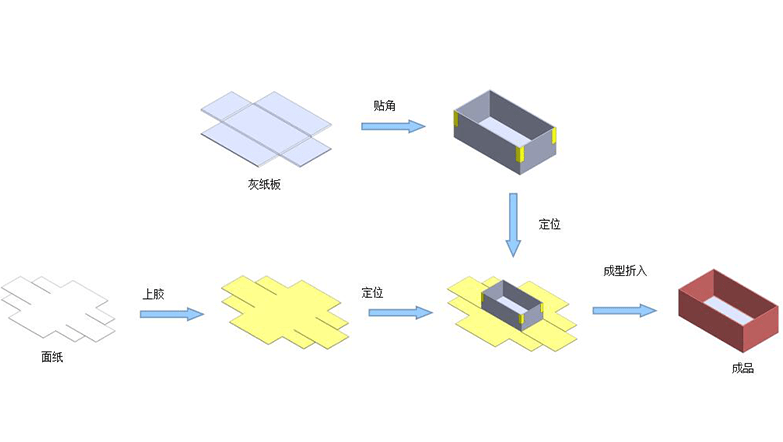
Understanding the full process is key before you invest in machinery. Knowing each step helps you choose the right equipment for your needs. Let’s look closer at how these boxes are made and the machines that make it possible, so you can boost your production quality and output.
How to manufacture rigid boxes?
Are inconsistent box corners hurting your product’s premium look? Manual folding can vary. Automated grooving and forming ensure perfect, sharp edges every time, giving your packaging a high-end feel.
Manufacturing rigid boxes involves several key steps: processing the greyboard (cutting, grooving), preparing the cover paper (gluing), precisely positioning the board onto the glued paper, and automatically wrapping and folding using a dedicated rigid box making line 1.
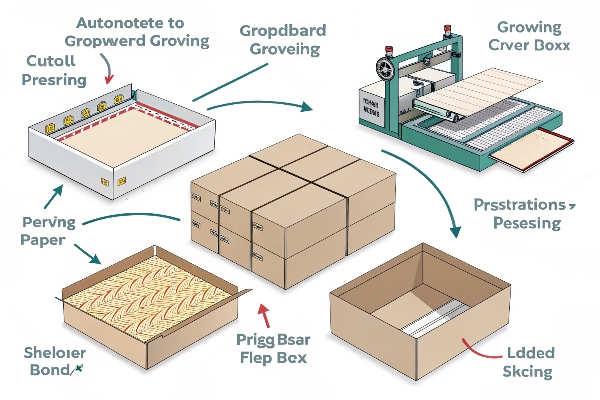
Let’s dive deeper into the manufacturing workflow. It usually starts with preparing the core material and ends with a finished, high-quality rigid box.
Greyboard Preparation
The foundation of a rigid box is its structure, typically made from greyboard (also called chipboard). First, large sheets of greyboard are cut down to the specific flat size needed for the box base and lid. This is done using a greyboard slitter or shearing machine. After cutting, the board needs processing to allow for clean folds. Here, you have a key choice: grooving or slotting.
Slotting, often used with corner taping (stay machine), removes material at the corners 2. This can sometimes leave slight recesses that might show through the wrap paper. Grooving, however, cuts V-shaped channels into the board where folds are needed. This allows the board to fold into perfectly sharp, 90-degree angles without removing corner material, leading to a much cleaner, more premium look with “pretty plump right angles” 23. At Kylin Machine, we often recommend grooving machines for high-end boxes because the finish is superior.
Cover Material Gluing & Positioning
While the greyboard is prepared, the outer wrap material (printed paper, textured paper, fabric, etc.) is prepared separately. This wrap is fed into an automatic gluing machine. This machine applies a precise layer of adhesive, usually hot-melt or cold PVA glue, evenly across the surface. Getting the glue consistency and amount right is important for a good bond without seepage. Once the wrap is glued, it moves to the positioning station. Here, the prepared greyboard components (base or lid) are accurately placed onto the glued wrap. High-tech machines often use robotic arms or vision systems (“spotters”) for extremely precise placement, ensuring consistent margins and alignment 1. This accuracy is critical for the final appearance.
Box Forming & Finishing
This is where the box takes its three-dimensional shape. The glued wrap with the positioned greyboard is transported into the automatic rigid box forming machine 4. Mechanical arms and formers fold the wrap edges up and over the greyboard sides. The corners are carefully tucked and folded – sometimes using a corner pasting machine for extra reinforcement if slotting was used, but often folded directly if grooving was used. Pressure is applied to ensure the wrap adheres smoothly and securely to the board structure. The machine folds the turnover edges inside the box for a neat finish. The completed box base or lid is then ejected onto a conveyor belt, ready for assembly (if it’s a two-piece box) or further processing like adding inserts.
What machines are used to make boxes?
Feeling confused about the exact machines needed for rigid box production? Choosing the wrong equipment wastes valuable time and money. We can help you identify the essential machines for your specific production needs.
Key machines include greyboard slitters (cutting), grooving machines (for folding), automatic gluing machines (applying adhesive to wrap), robotic positioning systems (spotters), and automatic rigid box forming machines 14. Optional machines add features like corner pasting or window patching.
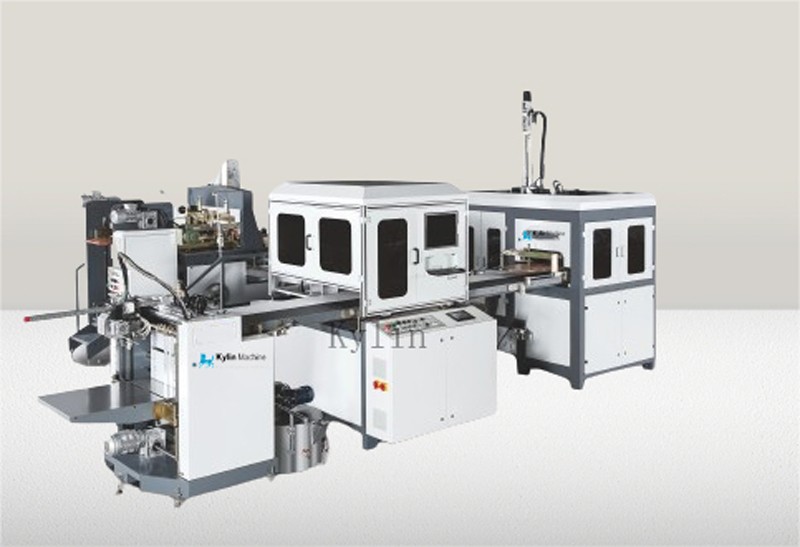
Building a rigid box production line involves several specialized machines working together. Let’s break down the core components and some optional extras you might consider.
Core Production Line Machines
A typical automated line starts with processing the main structural material, greyboard.
Greyboard Slitter/Shear: Cuts large greyboard sheets into the required blank sizes for box bases and lids. Precision here prevents issues later.
Grooving Machine: Cuts V-grooves into the greyboard blanks. This allows for sharp, clean 90-degree folds, essential for premium boxes 3. Our KY-1200A board v grooving machine is an example of this type 2.
Automatic Gluing Machine: Applies adhesive (hot or cold glue) evenly onto the wrap material (paper, fabric, etc.). Consistent glue application is vital.
Positioning System (Spotter): Accurately places the grooved greyboard onto the glued wrap. Modern systems often use cameras and robotic arms for high precision, like those integrated into our automatic lines 1.
Automatic Rigid Box Former: This is the main machine that takes the glued wrap and board, then folds the wrap around the board, presses it firmly, and forms the final 3D box shape 4. Models like our KY-420B or KY-430A handle this automatically 14.
These machines often work in sequence as part of an integrated production line for maximum efficiency.
Optional and Specialized Machines
Beyond the core line, other machines can enhance capabilities or create unique boxes:
Corner Pasting Machine: Used mainly if slotting (instead of grooving) is employed. It applies tape to reinforce the corners before wrapping.
Magnet Inserting Machine: For boxes with magnetic closures.
Window Patching Machine: Adds a clear plastic window to the box.
Special Shape Machines: We also offer machines for non-standard boxes, like polygonal boxes (triangle, hexagon, octagon), round boxes, or collapsible boxes 56. These require specialized forming technology.
Ancillary Machines: Depending on the final product, you might also need machines for ribbon pasting, charpie/foam insert making, or book slipcase production 6.
Here’s a simple table summarizing core machines:
| Machine Type | Function | Example Kylin Model (if applicable) |
|---|---|---|
| Greyboard Slitter | Cuts greyboard sheets to size | (Various available) |
| Grooving Machine | Creates V-grooves for sharp folds | KY-1200A 2 |
| Automatic Gluer | Applies adhesive to wrap material | (Integrated in lines) |
| Positioning System | Places board accurately on glued wrap | (Integrated in lines) |
| Auto Rigid Box Former | Folds wrap around board, forms box shape | KY-420B 4, KY-430A 1 |
| Corner Pasting Machine | Reinforces corners (alternative to grooving) | (Optional) |
Choosing the right combination depends on the box types you want to produce, desired quality level, and production volume. We can help guide you through these choices based on our experience.
What is a rigid box made of?
Do your customers sometimes perceive your packaging as flimsy or cheap? Material choice makes a huge difference. Rigid boxes use strong core materials and quality wraps for that premium, durable feel customers expect.
A rigid box is typically made from a thick, sturdy core material like greyboard (chipboard) for structure. This core is then covered by a thinner wrap material like printed paper, textured specialty paper, fabric, or leatherette for aesthetics and branding.
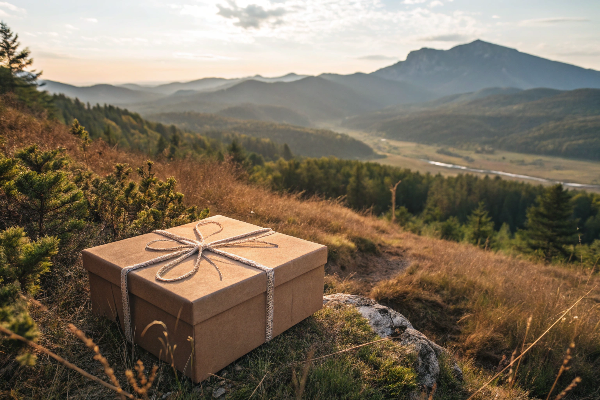
Understanding the components of a rigid box helps appreciate why they feel so substantial and look so good. Let’s break down the key materials involved.
The Structural Core
The heart of a rigid box is its structural board. This gives the box its strength, rigidity, and shape.
Greyboard (Chipboard): This is the most common material. It’s made from recycled paper fibers compressed into dense, thick sheets. Thickness typically ranges from 1mm to 3mm or more, depending on the required strength and size of the box. A thicker board creates a more substantial, heavier-feeling box, often associated with luxury products.
MDF (Medium-Density Fiberboard): Sometimes used for very high-end or specialized shapes, MDF offers excellent smoothness and stability but is heavier and more costly than greyboard 6.
Plastic: Used less often for traditional rigid boxes but can be incorporated for specific designs or functionalities, sometimes in combination with board 6.
The choice of core material and its thickness directly impacts the box’s perceived quality and durability.
The Aesthetic Wrap
The core board provides structure but isn’t usually visually appealing. It needs an outer wrap. This wrap serves both protective and decorative purposes.
Paper: The most versatile option. This can range from standard coated art paper (which can be printed with complex graphics and branding) to uncoated papers with natural textures. Specialty papers with embossed patterns, metallic finishes, soft-touch coatings, or vibrant colors are very popular for adding a luxury feel.
Fabric: Materials like linen, satin, or velvet can be used for very high-end packaging, often seen in jewelry or perfume boxes. Applying fabric smoothly requires careful machine setup.
Leatherette (Faux Leather): Provides a sophisticated look, often used for watch boxes, corporate gifts, or spirits packaging.
Thin Cardboard: Sometimes a printed thin cardboard wrap is used, especially if complex folding or die-cut elements are part of the design.
The wrap is where branding, graphics, and tactile elements come to life.
Adhesives
Connecting the core and the wrap requires adhesives.
Hot Melt Glue: Offers fast setting times, good for high-speed automated lines. It provides a strong initial bond.
Cold Glue (PVA-based): Takes longer to dry but often provides a very strong, durable bond. It can sometimes allow for slight repositioning during manufacturing. Requires careful application to avoid warping paper wraps.
The right combination of core, wrap, and adhesive, assembled with precision machinery, results in the high-quality rigid box customers value.
What is the best material for your rigid box packaging?
Worried about choosing packaging materials that don’t quite match your brand image or protect your product effectively? Making the wrong choice can disappoint customers and hurt sales. We can help you select materials for optimal impact and function.
The “best” material isn’t one-size-fits-all. It depends heavily on your specific product, brand positioning, budget constraints, and desired aesthetic finish. Key considerations include board thickness for needed strength, wrap texture and print for visual appeal, and sustainability goals.
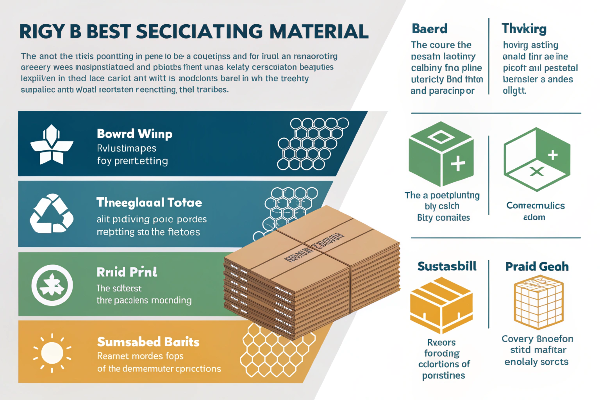
Selecting the right materials is crucial for creating packaging that resonates with your target audience and performs well. Let’s explore the factors you should weigh.
Matching Material to Product
The nature of your product dictates some material requirements.
- Heavy or Fragile Items: Require thicker, denser greyboard (e.g., 2mm-3mm) for adequate protection during shipping and handling. Think electronics, glass bottles, or heavy gift sets.
- Luxury Goods: Often benefit from premium materials. This could mean thicker board for a substantial feel, paired with specialty wraps like soft-touch paper, textured linen, foil-stamped paper, or even fabric or leatherette. The unboxing experience is key here.
- Cosmetics or Fashion: Visual appeal is paramount. Wraps with high-quality printing, special finishes (like spot UV or embossing), and unique textures can elevate the brand image 4.
- Food Items (e.g., Chocolates, Tea): Materials must be food-safe. Wraps might need specific coatings or barriers. Aesthetics remain important – think elegant tea boxes or festive sweet boxes 4.
Balancing Cost and Quality
Material choices significantly impact the final cost per box.
- Budget Constraints: Standard greyboard (e.g., 1.5mm) paired with printed art paper is a cost-effective solution that still provides good quality.
- Perceived Value: Investing in slightly thicker board or a nicer wrap finish can dramatically increase the perceived value of the product inside, often justifying a slightly higher packaging cost. Calculate the return on investment – will better packaging drive more sales or allow a higher price point?
- Machine Compatibility: Ensure your chosen materials work well with your (or your supplier’s) machinery. Some very thick boards or delicate wraps might require specific machine capabilities or slower run speeds.
Considering Sustainability
Environmental concerns are increasingly important to consumers.
- Recycled Content: Using greyboard with high post-consumer recycled content is a strong eco-friendly statement.
- FSC-Certified Papers: Choosing wraps made from responsibly sourced paper (certified by the Forest Stewardship Council) appeals to eco-conscious buyers.
- Inks and Adhesives: Opting for vegetable-based inks and eco-friendly adhesives can further reduce environmental impact.
- Recyclability: Design the box (and choose materials) with end-of-life recycling in mind. Avoid excessive use of mixed materials (like plastic laminates on paper) if recyclability is a major goal.
Here’s a table summarizing these factors:
| Factor | Considerations | Examples |
|---|---|---|
| Product | Weight, fragility, type (luxury, food, tech) | Heavy item -> Thick board. Luxury -> Premium wrap. Food -> Food-safe grade. |
| Brand Image | Target audience, perceived value (premium, eco-friendly, functional) | Premium -> Soft-touch/foil wrap. Eco -> Recycled board/FSC paper. |
| Budget | Cost per unit vs. desired quality | Lower budget -> Standard board/art paper. Higher -> Specialty materials. |
| Finish | Look & feel (texture, print, coatings, embossing) | Textured paper, high-res printing, spot UV, embossing/debossing. |
| Logistics | Protection needed for shipping | Thicker board for long transit, potential inserts for fragile items. |
| Sustainability | Material source, recyclability, inks/glues | Recycled content, FSC certification, soy inks, easily separable materials. |
Ultimately, the best approach is often to get samples, test different combinations, and perhaps consult with packaging experts like us at Kylin Machine. We’ve seen countless projects and can offer insights based on what works best for different industries and goals.
Conclusion
Making high-quality rigid boxes efficiently comes down to using the right automated machines and choosing appropriate materials. We at Kylin Machine provide advanced machinery solutions to improve your production speed, precision, and the overall appeal of your final boxes.
- Kylin Packaging Machinery Factory. (n.d.). Auto Rigid Box Machinery. Retrieved from https://postpressmachines.com/Machine/auto-rigid-box-machinery/ (Based on inferred content from URL structure and reference ID 1) ↩ ↩ ↩ ↩ ↩ ↩
- Kylin Packaging Machinery Factory. (n.d.). Detail of KY-1200A Groove Machine. (Internal Document provided as reference ID 2) ↩ ↩ ↩ ↩
- Kylin Packaging Machinery Factory. (n.d.). Detail of Groove Machine. (Internal Document provided as reference ID 4) ↩ ↩
- Kylin Packaging Machinery Factory. (n.d.). Detail of Auto Rigid Box Machine KY-420B. (Internal Document provided as reference ID 5) ↩ ↩ ↩ ↩ ↩ ↩ ↩
- You are a top salesperson… (n.d.). Company Profile Snippet. (Internal Note provided as reference ID 3) ↩
- iBoxMachine. (n.d.). Product Listings. Retrieved from https://iboxmachine.com (Based on content analysis of reference ID 6)

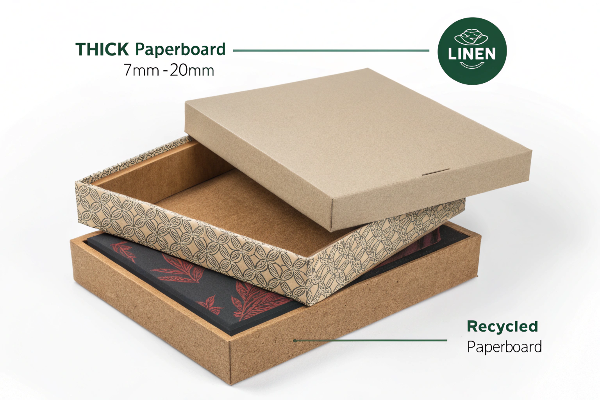
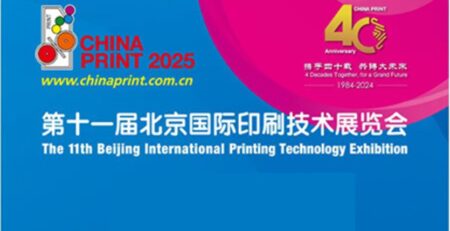
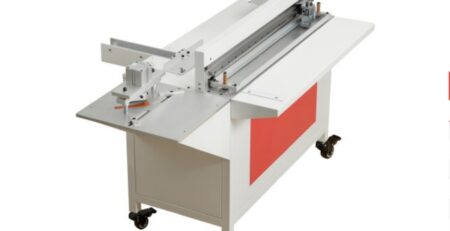
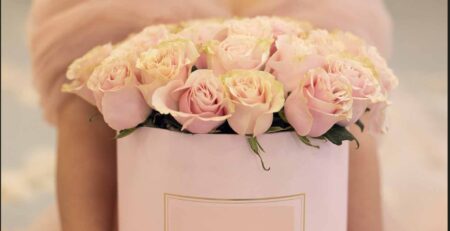
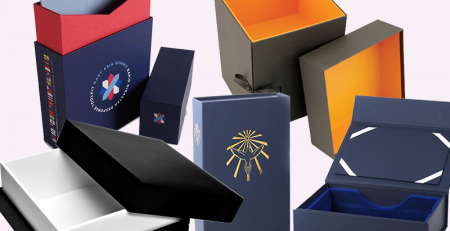

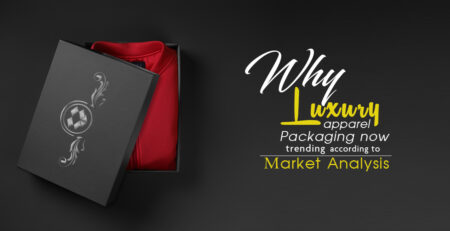
发表回复